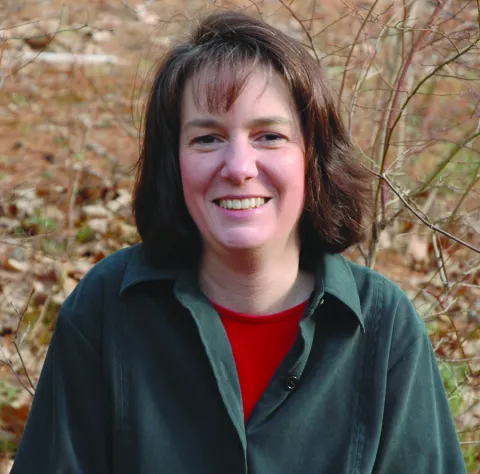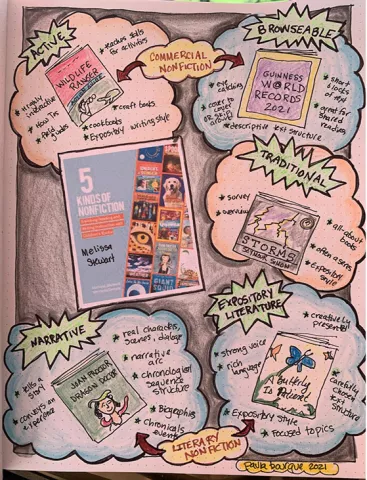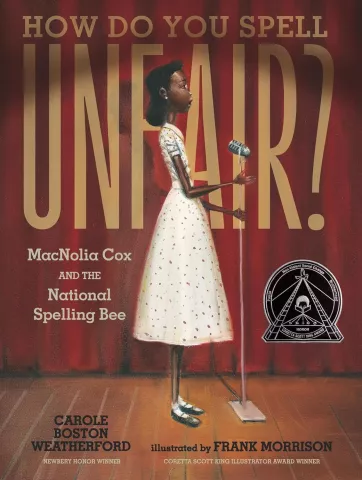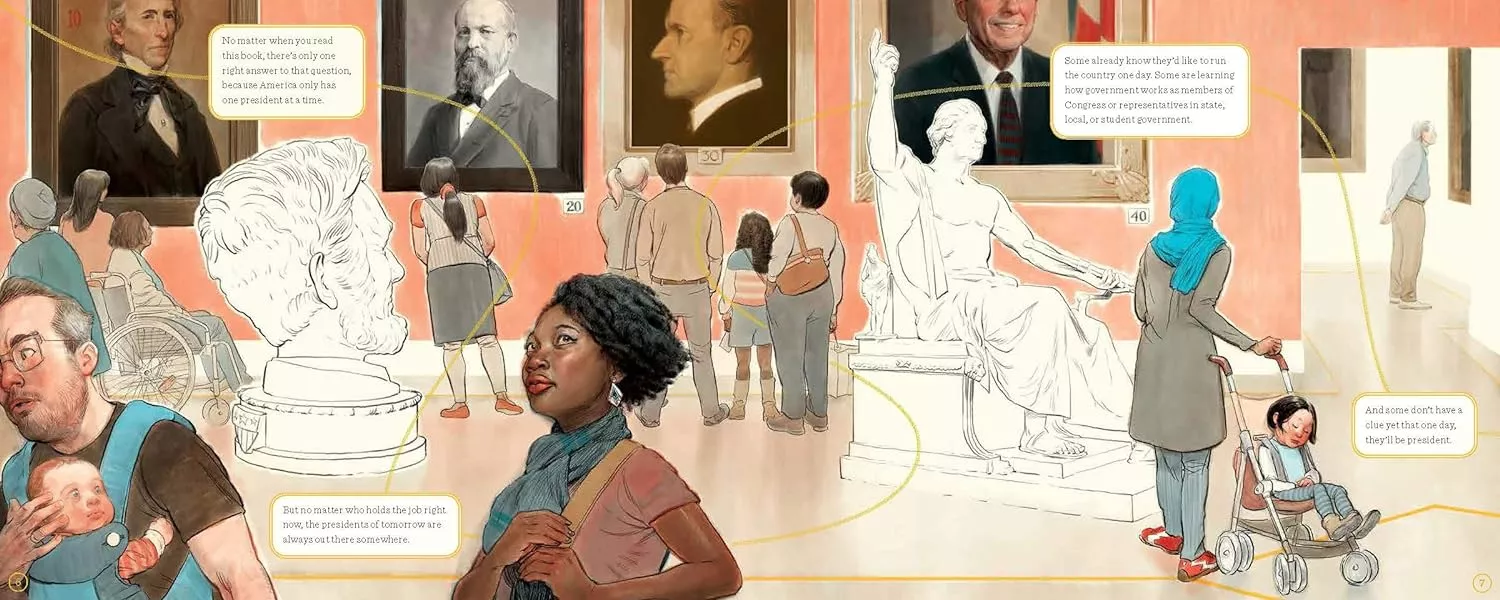
Key Takeaways
- It's a golden age of nonfiction books for younger readers.
- Many students prefer reading nonfiction and should have more access to those books.
- Educators should offer fiction and nonfiction titles to engage all readers.
It’s an exciting time for children’s literature and diverse books. Every year, more exciting new titles hit the market with a rainbow of diverse characters to capture the imaginations of children. But there are just as many exciting new titles in nonfiction for young readers, and in many cases, kids prefer those to fiction.
And that’s a fact!
A study published in the Journal of Literacy Research found that more than 80 percent of first-graders chose nonfiction when picking their own book, the Washington Post reports.
One isn’t better than the other, but educators should offer and teach both, says the National Council of Teachers of English (NCTE).
NCTE issued a position statement about the important role of nonfiction literature in K-12 education, encouraging teachers and librarians to provide more of these books to children.

According to the statement, “A just and equitable educational system that values and empowers all learners is one in which every [student] has the space to explore their curiosities, interests, and identities. With so much to offer young people as readers and thinkers, nonfiction should play a far more robust role in the reading and learning lives of young people in and out of school.”
To learn more about trends in nonfiction and how educators can help students connect with it, NEA Today spoke to nonfiction author and champion Melissa Stewart. She is developing a nonfiction-focused Personal Learning Community to help educators increase student awareness of and access to nonfiction.
Is nonfiction making a resurgence, or has it always been popular with teachers and students?
Melissa Stewart: Nonfiction has always been popular with the students. Sadly, most teachers don't realize that many students prefer nonfiction. We need to do a better job of making them aware of the wide variety of titles.

We’re in a golden age of nonfiction, and offerings have never been so vibrant and vital.
What is different about nonfiction now?
MS: It's really expanding in new and exciting ways. Twenty years ago, there was only one kind of nonfiction – traditional. Now we have that plus active nonfiction, browsable nonfiction, expository literature, and narrative nonfiction. These are five different, distinct forms.
The genre is blossoming with titles that are beautiful and dynamic, with a range of formats and text structures. They feature rich, engaging language that excites and inspires young readers.
There is so much to offer students that can be used for instruction, read-alouds, book talks, book clubs, and author studies.
When it comes to issues of racial and social justice, fiction titles get a lot of attention. How does nonfiction help kids explore these topics?
MS: When you have high quality nonfiction books, the exploration can go beyond what you might find in a work of fiction. Nonfiction offers additional context, appropriate for the grade level you are working with.
For example, the NEA Read Across America book Stamped: Racism, Antiracism and You, by Jason Reynolds and Ibram X. Kendi, is written in a way that really appeals to high school students, and there is also a middle grade adaptation by Sonja Cherry-
Paul, Stamped (For Kids): Racism, Antiracism and You, that does an excellent job of delivering information to a tween audience.
Other titles tell true stories about people and events in ways that kids can really relate to. For example, How Do You Spell Unfair? MacNolia Cox and the National Spelling Bee by Carole Boston Weatherford and Frank Morrison, is the true story of MacNolia Cox who, in 1936, became the first African American to win the Akron, Ohio, spelling bee, thus qualifying for the National Spelling Bee in Washington, D.C. But when judges realized she might win, they changed the rules in the middle of the competition and gave her a word that was not on the approved list.

It's a beautifully illustrated, finely crafted picture book that brings racism to life for kids in a relatable way. It shows them the impact racism has had on people throughout our history and today.
Why do you think so many young readers prefer nonfiction?
MS: Why wouldn’t they? If adults enjoy it – 60 percent of adult books sold are nonfiction – it follows that children would, too. But kids don’t buy their own books, and only 24 percent of children’s books sold are nonfiction. We need to get more great nonfiction books into the hands of children who love it.
The goal is to help kids fall in love with reading and books. Research shows that most children enjoy fiction and nonfiction equally, and for some children, nonfiction is the gateway to literacy. I recommend that educators and parents offer children both genres—fiction and nonfiction—and watch closely to understand each child’s preferences.
How can teachers find quality nonfiction titles to offer?
MS: The best thing to do is ask their librarian. The librarian’s job is to be immersed in all the wonderful books coming out and to help teachers connect a book to a student or lesson. The library is the heart of the school, and the librarian is what makes it beat.
There are also organizations that share lists of recommended books each year, like the National Science Teaching Association and the National Council for the Social Studies and NCTE. Most educators are aware of the American Library Association’s Caldecott, Coretta Scott King, and Newberry awards, but ALA also has the Sibert Award for distinguished nonfiction.
What trends do you see in nonfiction publishing for elementary, middle, and high school readers?
MS: There is so much experimentation going on right now and nonfiction is growing and evolving in new directions. Authors and illustrators are pushing the development of the genre, and the books are richer and more engaging than ever before. There’s something to entice every child.
We’re starting to see more graphic-style nonfiction with comics and sequential art. There are many expository nonfiction books that deliver complex science information in innovative ways. Two of my recent favorites are Butt or Face? A Hilarious Guessing Game Book for Kids by Kari Lavelle, which looks at animal defenses and adaptations in an irresistible format, and The Book of Turtles by Sy Montgomery and Matt Patterson, which looks at these amazing creatures in a fresh, thought-provoking way.

Another great title is The Next President by Kate Messner and Adam Rex, a visually dynamic book with an innovative text structure that walks readers through the history and lives of the United States presidents and into the future as if they were walking through a museum.
There is so much richness out there that kids and teachers just need to explore!
